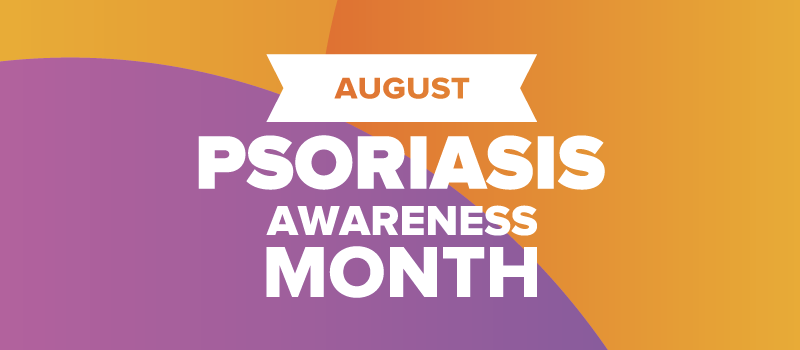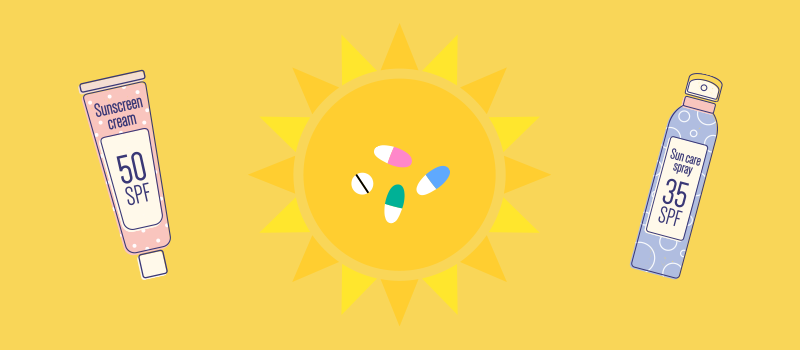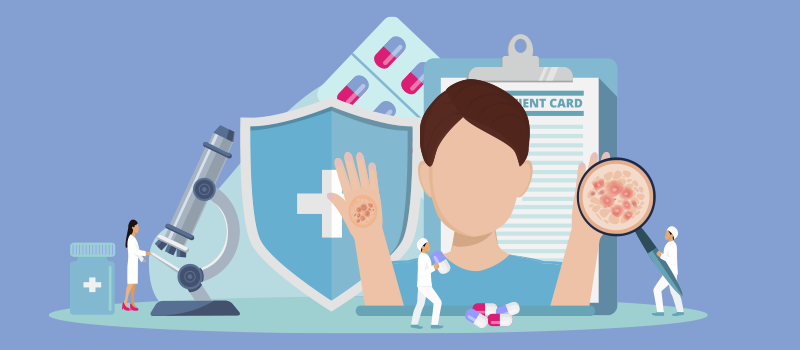What’s the Buzz
The Bee Healthy Blog
What are the different types of eczema?

Eczema is a common skin condition that affects more than 30 million Americans. It causes the skin to become inflamed, itchy and discolored (red in lighter skin tones and brown/gray in darker skin tones). What exactly causes eczema is not fully understood, but it is a combination of genetic and environmental factors. A trigger (irritant or allergen) in the environment or inside the body causes the immune system to react abnormally, leading to inflammation, which causes the symptoms of eczema.
There is more than one type of eczema, each with its own triggers and treatments. A person can have more than one eczema type on their body at any given time. That’s why it is important to consult a healthcare provider, preferably a dermatologist, who can accurately diagnose eczema, treat it, and help prevent flare-ups.
What is the main cause of eczema?
Scientists have not fully sorted out what causes eczema. It occurs for complex reasons that involve both genetic and environmental factors. One thing that is common to all the different types of eczema is that the immune system is overactive or disordered. A severe reaction to allergens and irritants triggers inflammation. The inflammation damages the normal, healthy skin barrier, causing dry skin, itching, and rashes.
Researchers have found that people with eczema, specifically atopic dermatitis, have a mutation in a specific gene. This gene codes for a protein called filaggrin which is responsible for maintaining a healthy skin barrier. In individuals with eczema, the gene mutation leads to defective filaggrin, which in turn causes rashes and infection-prone skin.
What are the 7 different types of eczema?
According to the National Eczema Association, there are 7 different types of eczema, which are briefly described below.
Atopic dermatitis
Atopic dermatitis is the most common form of eczema. It affects nearly 10 million children and 16.5 million adults in the United States. It is a chronic (long-lasting) type of eczema that can start in childhood and continue for many years, sometimes throughout a person’s life. Lifestyle changes (eating a healthy diet, exercising, sleeping well, managing stress) can help manage atopic dermatitis. A regular bathing and moisturizing routine is also important in keeping this type of eczema under control. A dermatologist can prescribe topical corticosteroids, other non-steroidal creams and ointments, and biologic agents to help manage the symptoms of atopic dermatitis.
Contact dermatitis
This is a type of eczema that occurs due to irritant contact. The skin becomes irritated and inflamed when it comes in contact with a trigger. A common example of allergic contact dermatitis is poison ivy. Contact dermatitis is common in people who have occupational exposure to chemicals, for example, healthcare workers, janitors, and hairstylists. Unlike atopic dermatitis, contact dermatitis does not run in families and is not linked to other allergic conditions like hay fever or asthma. Contact dermatitis eczema may be somewhat easier to treat than atopic dermatitis. It is important to identify and avoid triggers that cause it. A doctor can prescribe steroid medications (oral or topical) to reduce itching and other symptoms.
Dyshidrotic eczema
This eczema occurs on the hands and feet. It is also known as hand and foot eczema, palmoplantar eczema, and pompholyx. It is more common in women and has a genetic component (it tends to run in families). Dyshidrotic eczema is often present along with other types of eczema. People with this condition tend to have periodic flare-ups over a long period of time. It can be triggered by hot humid weather, exposure to metals like nickel, and stress.
Neurodermatitis
This type of eczema is also called lichen simplex chronicus. It consists of one or two scaly patches of skin with intense itching. It is usually diagnosed between the ages of 30 and 50 and is more common in women. A doctor may treat neurodermatitis with skin patches containing lidocaine (a local anesthetic agent) and capsaicin to help desensitize the nerves. Non-steroidal anti-itch creams and corticosteroids are used to break the itch-scratch cycle.
Seborrheic dermatitis
This is a type of eczema that tends to occur in parts of the body where there are a lot of seborrheic (oil-producing) glands, such as the scalp, nose, around the eyebrows, armpits, upper back, chest, and groin. It can occur in both infants and adults and may last for many years, following a pattern of flare-ups and remissions. A variety of triggers can cause a flare of seborrheic dermatitis, including stress, cold dry weather, hormonal changes, harsh detergents, and some medications.
Nummular eczema
This type of eczema is also called discoid eczema. It gets its name from the circular coin-shaped patches that develop on the skin. It can occur at any age. It is more common in men than in women. Nummular eczema can resemble other skin conditions such as psoriasis or ringworm. It can occur alone or with other types of eczema. One of the triggers for this type of eczema is trauma to the skin from insect bites, scrapes, or chemical burns. It is usually treated with topical corticosteroids and antibiotics (if skin infection is present).
Stasis dermatitis
This type of eczema occurs due to poor circulation. It is also called gravitational or venous eczema. It occurs when defective valves in the veins lead to pooling of blood and fluid in the lower legs. Varicose veins are a risk factor for stasis dermatitis. Without treatment, this type of eczema can lead to the formation of open sores called venous ulcers. Treatment for stasis dermatitis consists of elevating the legs to help blood flow, using compression stockings, and applying topical antibiotics if there is a skin infection.
What do atopic dermatitis, contact dermatitis, and other types of eczema look like?
Not sure whether you are dealing with atopic dermatitis vs seborrheic dermatitis or seborrheic dermatitis vs other types of eczema? Here is a quick overview of what each type of eczema typically looks like.
- Atopic dermatitis consists of dry, itchy skin with rashes. The rashes can occur anywhere on the body and weep or ooze fluid and bleed when scratched.
- Contact dermatitis has the appearance of irritated, inflamed skin with burning and blistering.
- Dyshidrotic eczema consists of intensely itchy, tiny painful blisters on the palms, soles, and along the edges of the toes and fingers.
- Neurodermatitis causes intense itching in one or two patches of skin. Over time, the scratching can lead to skin infections and cause the skin to become dry, thick, and leathery with scaling and discoloration (this is called lichenification).
- Seborrheic dermatitis has the appearance of a cradle cap (patches of greasy, scaly skin on the scalp) in infants. It can also occur on the bottom and may be mistaken for diaper rash. In adults, seborrheic dermatitis looks like red, swollen, greasy, scaling skin.
- Nummular eczema has a characteristic appearance of circular, coin-shaped, red/pink/brown, oozing or crusted over, itchy patches of skin.
- Stasis dermatitis has the appearance of red or ashen/gray/brown discoloration in the lower legs along with ankle swelling. There can also be itching and scaling of the skin and a heavy feeling in the legs after standing or sitting for long periods of time.
What cures eczema fast?
There is no cure for eczema. However, the symptoms can be managed to keep you comfortable and prevent flare-ups. It is highly recommended that you get the advice, diagnosis, or treatment of a dermatologist. A doctor can make the correct diagnosis and give you the appropriate treatment for different types of eczema.
References:











SOCIAL